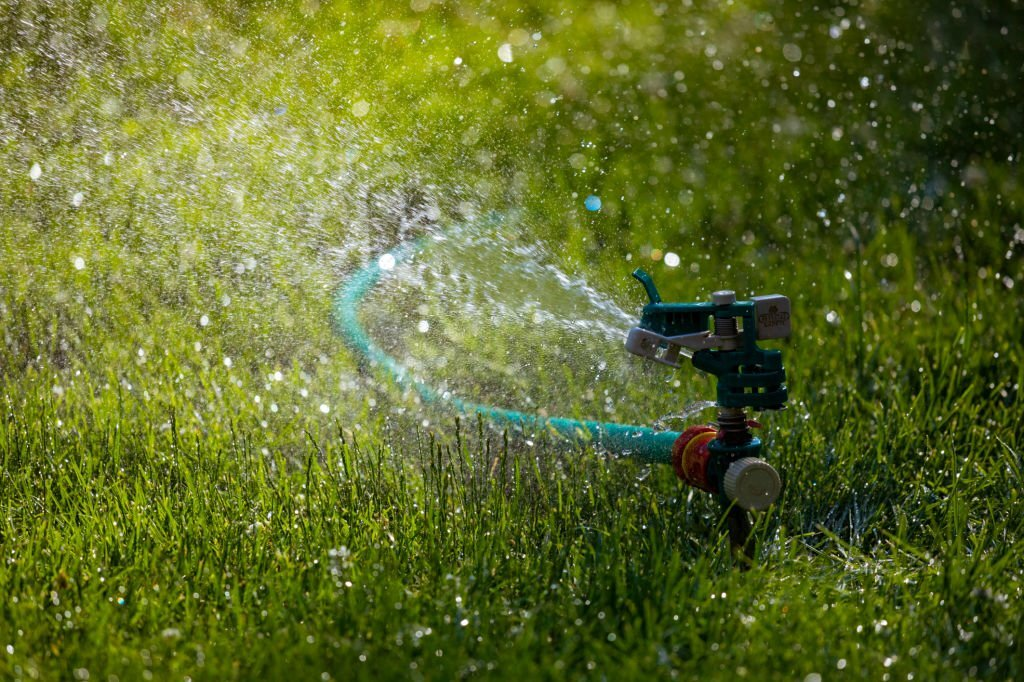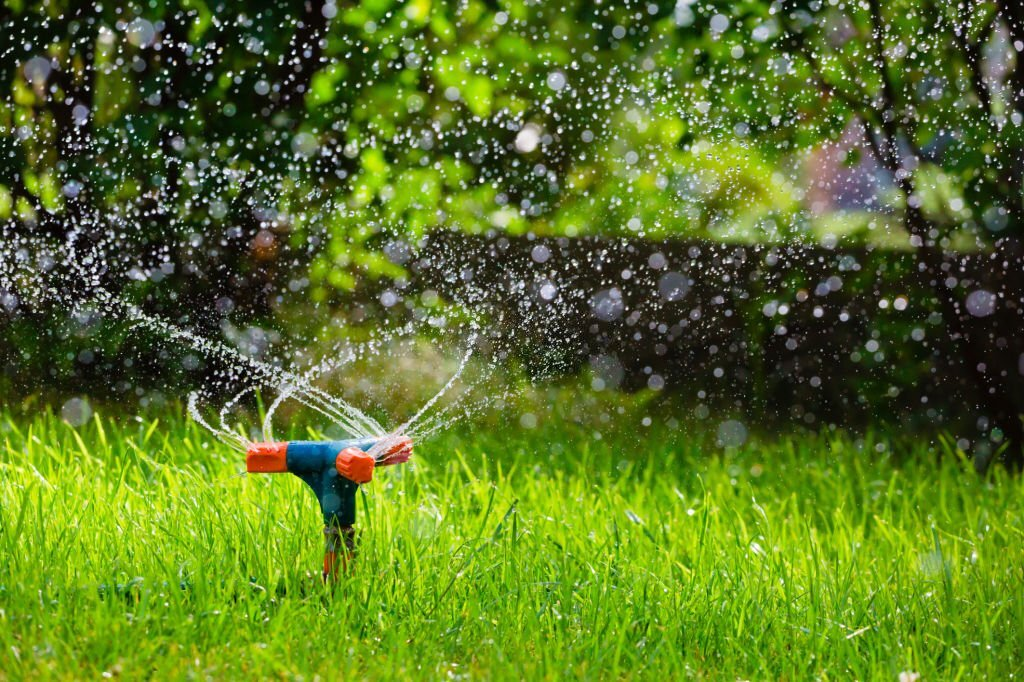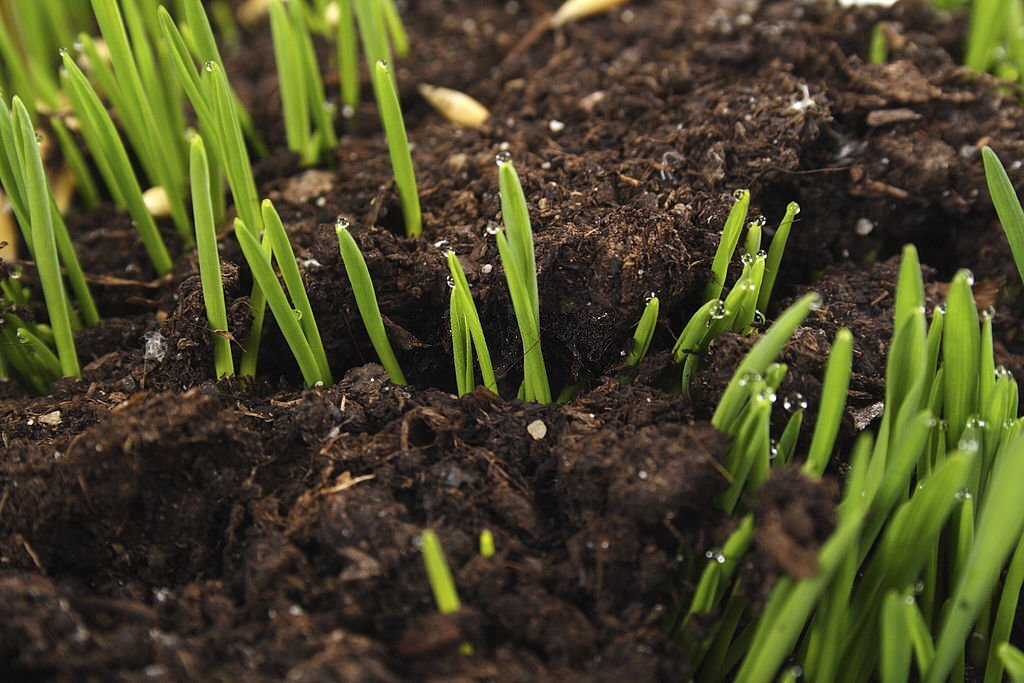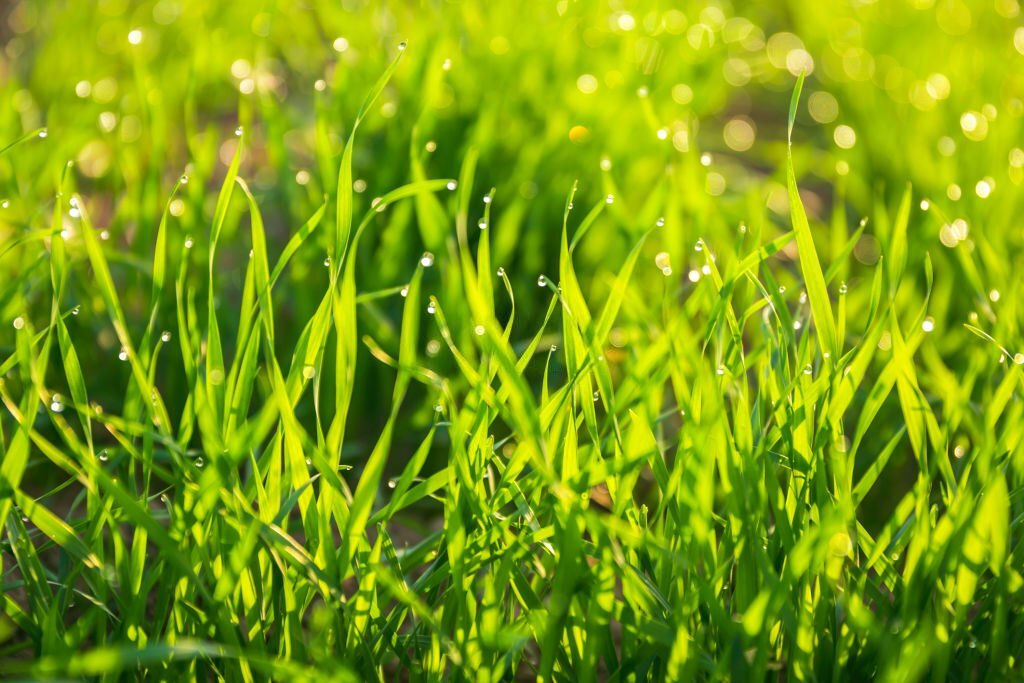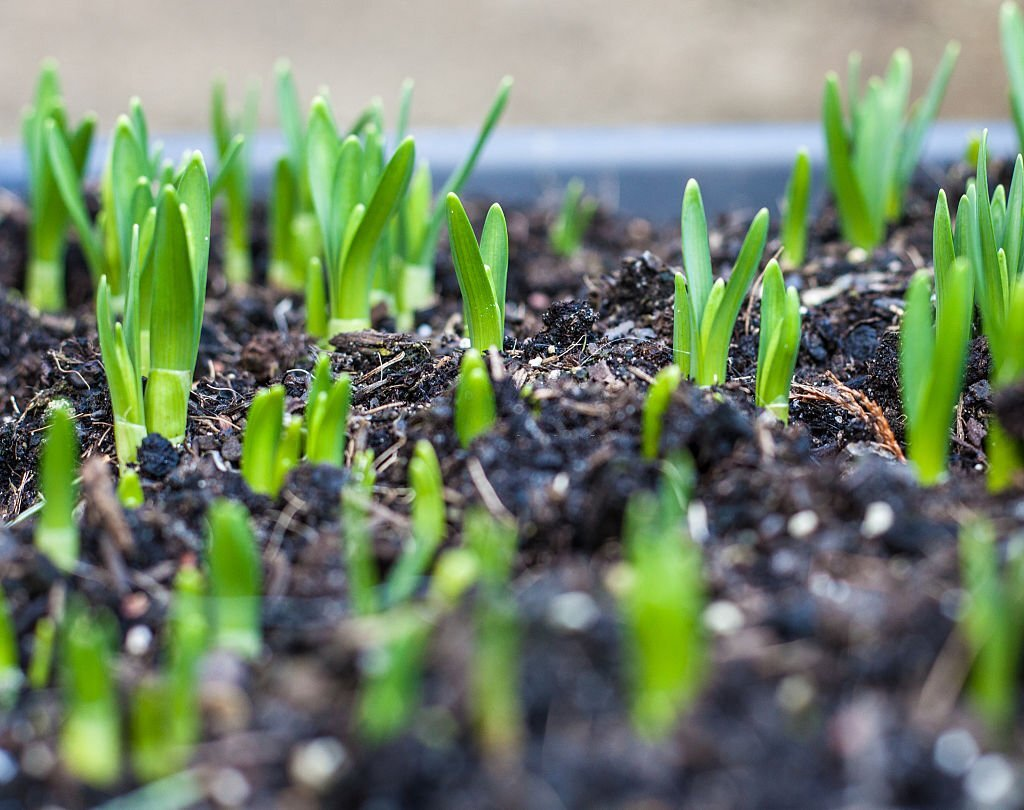Grass seeds require regular watering if they’re going to sprout successfully – too much or too little water can cause problems for young plants. But don’t worry – knowing how much is the right amount isn’t hard once you understand some basic rules about watering grass seed. With these tips, keeping your new grass healthy will be a breeze.
Finally, learning when and how often to water your grass doesn’t have to take up all of your free time. We’ll show you simple ways that you can make sure your newly sown grass gets enough moisture without having to spend hours outside tending it every day. So read on and find out everything you need to know about giving your grass seed its best chance at success!
Understanding The Need For Watering
Watering grass seed is an important step in establishing a new lawn. Without regular watering, it’s unlikely that the seeds will germinate and grow. To ensure success with your new grass seed, you need to develop a regular watering schedule. This means providing enough water on a consistent basis so that the soil remains evenly moist down to at least two inches deep. With proper watering, your grass should start sprouting within 10-14 days after planting.
The amount of water needed for successful establishment depends largely on climate conditions as well as the type of soil. A sandy soil may require more frequent watering because it won’t hold moisture as long as heavier clay soils do. It’s also important to keep weeds from competing with your grass for resources like light, nutrients, and water. Weed control measures such as preemergent herbicides can play an important role in helping newly seeded areas establish quickly and weed-free.
Once you understand the importance of regular watering for new grass seed, you’ll want to determine how much water is necessary for optimal growth.
How To Determine The Right Amount Of Water
When planting grass seed, it is important to create a watering schedule that will ensure the seed stays moist and remains protected from any heat or cold. For warm-season grasses, such as Bermuda, Centipede, St. Augustine, Zoysia, and Bahia grasses, one should water lightly several times per day until the seeds begin to sprout. After that point, reduce the amount of water but still keep the soil moist by applying enough irrigation so that some runs off into the soil below each time you water. One should also avoid over-watering as this can cause fungal diseases, which can weaken and damage your lawn’s root system.
It is essential to remember that every type of grass requires different amounts of moisture in order for them to grow properly. As such, it is best to refer to the specific instructions listed on your bagged grass seed before setting up your watering schedule. Generally speaking, though, most types of turfgrass require about 1 inch of water per week in order for them to remain healthy and thrive.
To determine how much water has been applied during each session with an irrigation system or hose nozzle sprinkler, place multiple containers throughout the watered area and measure how much liquid accumulates after a certain amount of time has elapsed (usually 15 minutes). This will help provide a more accurate understanding of what you are actually providing your new grass with when establishing its initial growth phase.
Knowing when and how often to apply water correctly is important for successful germination and growth of newly planted grass seed – both short-term and long-term benefits come with proper watering!
The Benefits Of Proper Watering
After determining the right amount of water for lawn planting, it’s important to understand the benefits of proper watering. Watering grass seeds at the appropriate time and frequency is key for successful growth. A normal irrigation schedule should be established early on in order to ensure healthy turfgrass development.
Grass seed needs more frequent watering than other plants because its seeds are so small, making them vulnerable to drying out quickly. To prevent this from happening, grass seed must be kept moist until it germinates and begins growing roots. The best way to do this is by watering lightly two or three times per day if possible, especially during hot summer months when evaporation occurs rapidly. If there isn’t enough time to water multiple times throughout the day, then once daily in the early morning when temperatures are cooler will suffice as long as it’s done deeply enough.
Watering also helps promote weed prevention and pest control in lawns due to its ability to flush out potential pests living within soil layers near surface-level vegetation. But be sure not to overdo it! Too much water can lead to poor root establishment, disease outbreaks, and even death of young seedlings just starting out. It’s essential that gardeners practice moderation when irrigating newly planted grass seed beds; too little water won’t help grow strong roots either! With these tips in mind, you’ll have no trouble avoiding overwatering your new lawn planting project.
Avoid Overwatering
When watering grass seed, it is important to avoid overwatering. Too much water can cause the seeds to rot and prevent them from germinating. Not enough water will also make it difficult for new grass to grow. It’s essential to find a balance between providing adequate moisture without flooding the soil or washing away any of the newly planted seeds.
The best way to avoid overwatering is by feeling dampness in the ground before adding more water. Stick your finger at least one inch into the topsoil, and if it feels wet, wait another day before applying additional water. This helps maintain consistent levels of moisture while avoiding too much saturation that could damage newly emerging grass shoots.
To ensure you’re not underwatering, check up on your lawn every couple of days after planting grass seed. If there are dry patches visible on the surface, add a light sprinkling of water using a spray bottle or hose with an adjustable nozzle set to low pressure so as not to disturb freshly planted seeds and sprouts. With these tips in mind, you should be able to keep your garden adequately watered during its early growth stages. Now let’s take a look at when would be the best time to begin watering new grass seed.
Best Time To Begin Watering New Grass Seed
Don’t forget to water new grass seed as it is essential for its growth. When it comes to lawn care, one of the most important steps is ensuring that new grass seed is properly watered. The best time to begin watering your new grass seed is when you notice that the soil surface has begun to dry out. This indicates that the newly-planted seed has absorbed all of the moisture in the area and needs more water for continued growth.
To determine whether or not a new grass seed needs additional water, use your finger or a trowel to check if the top inch of the soil feels damp. If so, then there is no need for extra water. However, if it feels dry, then lightly spray the seeds with a garden hose fitted with an adjustable nozzle set on low pressure. Keep in mind that too much water can damage young seedlings, so be careful not to overdo it. It’s also important to avoid puddles forming around the seeded area as this may cause diseases like root rot which could kill off your newly planted grass.
Now that you know how often you should begin watering new grass seed, it’s time to focus on the frequency of watering. Understanding how much and how often you should be giving your lawn what it needs will ensure healthy grass growth and development – something every homeowner wants!
Frequency Of Watering
Watering new grass seeds is an important part of achieving a healthy lawn. To ensure the best results, it’s essential to keep the seeds moist during germination and establishment. Here are some considerations when watering:
* Amount:
* For newly planted grass seed, water lightly and often enough so that the soil remains consistently damp but not soggy or flooded.
* Depending on the weather conditions, this may mean daily waterings for 10-15 minutes per area.
* As time passes and your grass continues to grow, you can reduce the frequency of your waterings while increasing their intensity.
* Timing:
* Early morning hours are ideal as they provide plenty of time for surfaces to dry off before nightfall. Doing this will help prevent fungus growth which could harm your young turfgrass plants.
* Water in short bursts rather than long drawn-out sessions – especially if using overhead sprinklers — so that more moisture gets absorbed by the soils instead of evaporating away into the air.
* Temperature:
* The temperature of the water also matters; warm or hot water isn’t recommended as it can burn delicate root systems and cause other damage to your grass seedlings. It’s best to use cool/room temperature tap water instead since this won’t shock or harm them in any way.
Keeping these tips in mind will help you create an optimal environment for the successful germination and establishment of your new grass seeds! With proper watering, you’ll be able to achieve a lush, green lawn in no time at all!
Establishing A Schedule For Optimal Results
If you’re looking to establish a new lawn, you’ll need to pay careful attention to the soil quality and the germination process of your grass seed. Loose soil is a great starting point, as it allows the roots of your warm-season grass to penetrate deeply and establish themselves more easily. Additionally, it’s important to make sure that the grass seed requires the right conditions to grow, including enough moisture to stay moist during the germination process.
To ensure that your new seed stays moist and begins to grow properly, it’s important to water your lawn areas regularly during the growing season. However, it’s important to avoid watering too frequently or for too long, as this can lead to over-saturation and poor soil quality. Instead, water your new seeds deeply but infrequently, aiming to give them exactly how much water they need to thrive.
One great way to water your new seeds is to use a cheap lawn sprinkler, which can cover the entire area with a light mist in just five to ten minutes. To maximize the effectiveness of your watering, it’s best to water your lawn areas in the late afternoon, as this gives the grass seed time to absorb the moisture it needs before the sun sets.
As your new seeds begin to germinate and grow, it’s important to keep them well-hydrated to ensure that they fully establish themselves in your yard. With the right soil quality, proper moisture levels, and a well-established watering routine, you can enjoy a beautiful, lush lawn for years to come.
Therefore, the most important step to ensure optimal growth is creating a watering schedule. The best way to establish this schedule is by understanding how much water your new lawn needs and how often it should be watered. Here’s a quick guide on how to develop an effective watering plan for your existing lawn or newly seeded area:
| How Much Water | Frequency of Watering |
|—————-|————————|
| 1/2 inch | Every other day |
| 1 inch | Every 3-4 days |
| 2 inches | Once per week |
| 3+ inches | Longer period (2 weeks)|
To achieve successful germination of grass seeds, keep the top inch of soil consistently moist – not soggy but damp. You can check if the soil is sufficiently hydrated by pushing your finger into it; if moisture clings to your finger, then you don’t need additional water yet. Furthermore, never allow any standing water on the surface, as this could cause fungal issues that will stunt the growth of your grass seedlings.
By following these guidelines, you can give yourself the best chance at having a healthy, vibrant-looking lawn with minimal effort. With regular watering cycles established early on, you’ll have less long-term maintenance down the line so that you can focus more time on enjoying your lush green space! Now let’s take a look at how soil type impacts water needs…
Soil Type And Its Impact On Water Needs
The type of soil in your area can have a major effect on how often you need to water grass seed. Clay soils tend to retain moisture better than sandy soils, meaning they don’t require as much watering. On the other hand, if you have sandy soil, then it is important to keep an eye on the amount of water you give your lawn and make sure that it does not dry out too quickly. Shady areas may also require less frequent watering because there is less direct sunlight hitting the ground and evaporating any moisture.
When planting Kentucky bluegrass seed, it’s important to be aware of the condition of your soil so that you provide enough (but not too much) water for optimal growth. It might take some trial and error until you get a feel for what works best in terms of frequency and quantity. The good news is that modern irrigation systems are designed to save time and energy by automating this process and making sure that each part of your lawn gets just the right amount of water at just the right interval.
In order to ensure healthy grass growth, understanding soil conditions as well as knowing when and how much water is essential. Mulch plays a key role in retaining moisture during hot days, which helps reduce evaporation from both sun exposure and windy weather; this will help promote even healthier development of roots and shoots.
The Role Of Mulch In Retaining Moisture
Mulch can play an important role in helping to retain moisture when watering grass seed. A layer of mulch helps prevent evaporation and keeps the soil moist longer than if there were no mulch present. Additionally, it acts as a barrier between the sun’s rays and the soil surface, thus reducing the amount of water needed for germination. By covering the newly-seeded area with a thin layer (1/4 – 1/2 inch) of organic material, such as straw or shredded leaves, you will be able to reduce overall water requirements while still ensuring that your new lawn has enough water to grow successfully.
Furthermore, by regularly adding additional layers of mulch during dry periods, you can help ensure that your grass seeds get just enough moisture without becoming overly saturated. This is especially true if you are dealing with poor drainage or runoff due to heavy rains. The next section looks at potential solutions for these issues in order to protect your newly seeded grass from being overwhelmed by too much rainfall.
Frequently Asked Questions
✅What Type Of Grass Seed Should I Use To Grow A Healthy Lawn?
Choosing the right grass seed is an important part of creating a healthy, lush lawn. Different varieties of grass are suitable for different climates and soil types, so it’s essential to select one that will work best in your area. Additionally, some seeds require more maintenance than others and may be better suited to those with plenty of time or resources available for their care.
For example, cool-season grasses are a group of grasses that thrive in cooler temperatures, typically ranging from 60 to 75 degrees Fahrenheit. They are commonly found in regions with colder climates, such as the northern United States and Canada. Cool-season grasses have the ability to grow vigorously in the spring and fall, slowing down during the hot summer months. These grasses are known for their fine texture, deep green color, and ability to withstand heavy foot traffic. They are often used for lawns, parks, and athletic fields. Some common cool-season grasses include Kentucky bluegrass, perennial ryegrass, and tall fescue. Proper maintenance, including regular mowing and watering, is essential for the health and longevity of cool-season grasses.
When selecting a type of grass seed, you should consider factors such as sunlight requirements, water needs, cold tolerance, and whether you need shade-tolerant species. You can find information about each variety at local garden centers or online retailers and websites dedicated to gardening. With this knowledge in hand, you’ll be able to make an informed decision about which type of grass seed is best for your particular needs.
Once you have chosen the right type of grass seed for your climate and conditions, proper watering techniques are key to keeping your new lawn growing strong. Depending on the season and weather conditions, frequency and duration may vary; however, generally speaking, most newly planted seeds should receive 1 inch of water per week until they become established — usually within four weeks from planting — then decrease gradually over time.
✅How Do I Know If I Am Overwatering My Grass Seed?
When it comes to watering grass seed, overwatering is one of the most common mistakes people make. Knowing when and how much to water your seeds can be tricky, but doing so will ensure you have a healthy lawn in no time. Here are some tips on how to know if you’re overwatering your grass seed:
* Observe the soil - Check for signs of saturation; if the soil looks too wet or muddy, then there's a good chance that you're overwatering.
* Monitor growth - If the grass isn't sprouting after several weeks, this could indicate an issue with too much moisture.
* Watch for other plants - Weeds often thrive in over-watered areas, so keep an eye out for them as well.
It's also important to remember that different types of grass may require different amounts of water. Research what type of grass best suits your climate and follow its recommended instructions closely. Additionally, making sure your irrigation system is properly managed can help cut down on potential issues caused by overwatering. Taking these extra steps will allow you to enjoy a lush green lawn without fear of damaging delicate grass seeds.
Ultimately, knowing when and how much to water your newly planted grass seeds takes practice and patience. Pay attention to the conditions around you – such as soil composition and temperature – while being mindful of any changes in growth patterns or weed infestations, all of which may indicate an issue with your watering routine.
✅What Type Of Soil Is Best For Watering New Grass Seed?
When it comes to watering new grass seed, the type of soil you use can make all the difference. The right combination of moisture and air in the soil will help your lawn get off to a strong start. Understanding how much water is needed for various types of soils helps ensure that your grass seed has optimal conditions for germination and growth.
Here are some tips for selecting the best soil for grass seed:
* Sand Soil:
* This type of soil drains quickly, so it needs more frequent watering than other types.
* Watering should be done at least twice a day until the seeds sprout.
* Once they have sprouted, reduce watering to once per day or every two days depending on rainfall amounts.
* Clay Soil:
* Clay retains more moisture than sand due to its higher levels of organic matter content.
* When planting grass seed in clay-based soils, water thoroughly but not too often as this can lead to overwatering and nutrient deficiencies in the plant roots.
* It's important to spread out irrigation times over several hours if possible since clay takes longer to absorb moisture compared with sandy loam soils.
* Loamy Soils:
* These soils provide an ideal balance between drainage and moisture retention which makes them great for growing grass from seed.
* They require less frequent watering than either sand or clay due to their ability to retain moisture without becoming soggy or overly wet like clay does when watered too often.
By choosing the right type of soil for your grass seed, you're giving your lawn a better chance at success by providing it with optimal conditions for germination and growth while limiting risks such as overwatering or nutrient deficiency caused by improper irrigation techniques. With careful selection and appropriate care, you'll soon find yourself enjoying lush green turf!
✅How Long Should I Water My Grass Seed Each Day?
Watering your new grass seed is an important step in the process of establishing a healthy lawn. But how long should you water it each day? The exact answer depends on several factors, including soil type and climate, but there are some general guidelines that can help ensure your grass seed grows well.
First, when watering newly planted grass seeds, make sure to keep the soil moist at all times until germination occurs. This usually takes about 7-14 days, depending on temperature and other conditions. To accomplish this, aim for deep and frequent irrigations every 1-3 days lasting 10-15 minutes per session:
* Use enough water so that it reaches 8 inches below the surface of the soil
* Aim for even coverage across all areas with sprinklers or hand watering
* Avoid creating runoff from over-watering by checking if moisture has reached the root zone before adding more water
* Consider using mulch around the seeded area to retain moisture longer between irrigation cycles
* Monitor rainfall levels in addition to irrigation cycles as too much rain may also cause runoff or wash away seeds
Once your grass seed starts to sprout, reduce frequency and increase duration slightly so that roots have time to develop properly. Aim for 4–5 sessions per week that last 20–30 minutes each, ensuring any excess water doesn't run off into neighboring properties. During hot summer months, use the same method but extend sessions up to 45 minutes at a time while allowing adequate drying time in between watering cycles.
By following these tips and adjusting according to local weather conditions, you'll give yourself the best chance of success with growing new grass seeds!
✅Is There A Way To Ensure My Grass Seed Is Getting The Right Amount Of Water?
Ensuring your grass seed is getting the right amount of water can be tricky. But with a few simple tips and tricks, you can make sure that it gets all the moisture it needs. Here are some ways to help ensure your grass seed has enough water:
* Regular & Consistent Watering:
* Make sure to water regularly throughout the day or week.
* Aim for about an inch of water per week.
* Water in short bursts rather than one long period of watering. This will help prevent runoff and give the seeds more opportunity to absorb the moisture they need.
* Monitor Soil Moisture Levels:
* Use a soil moisture meter to measure how much moisture is in the ground around your grass seedlings.
* If the levels drop too low, add more water until they reach their optimal level again.
* Install Automatic Sprinklers:
* Investing in an automatic sprinkler system can save you time and hassle when it comes to keeping your lawn watered properly. It also ensures that each area receives equal amounts of irrigation as needed.
These methods should help keep your grass seed happy and healthy! Properly monitoring soil moisture levels and providing consistent watering can go a long way toward ensuring successful germination and growth for your newly planted grass seed. With these steps taken care of, you’ll have lush green grass before you know it!
Conclusion
In conclusion, starting a new lawn with grass seed is an exciting project. With the right type of grass seed and soil, you can ensure your grass will be healthy for years to come. Knowing how often to water your new grass seed is key to getting it off to a good start. Watering too much or too little can have serious consequences on the health of your lawn. To keep your grass hydrated and healthy, try watering it every day for 15-20 minutes until the soil becomes moist but not soggy. Additionally, consider investing in a moisture meter so that you always know if your grass needs more or less water at any given time. Taking these steps when planting and caring for your new grass seed will make sure you get a lush green lawn!


